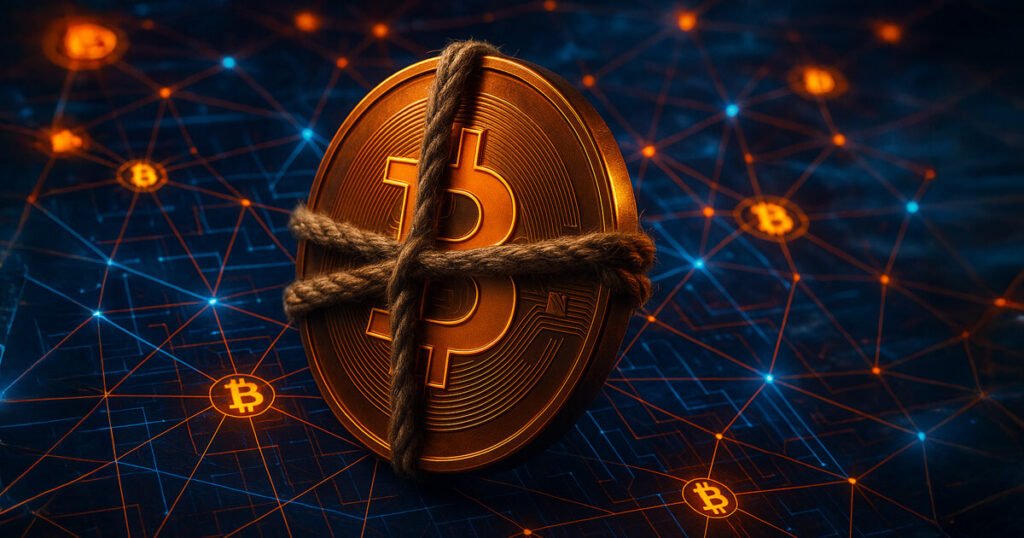The Debate Surrounding the Removal of the OP_RETURN Relay Cap in Bitcoin: Implications and Insights
The recent decision by Bitcoin Core developer Antoine Poinsot to merge a pull request that removes the longstanding 80-byte OP_RETURN relay cap has ignited one of the most contentious debates in the Bitcoin community since the block size wars. This change allows transaction creators to include larger OP_RETURN payloads provided they pay the associated fees. The implications of this decision stretch far beyond mere technical adjustments; they delve deep into the principles of decentralization and operational integrity within the Bitcoin network.
A Divided Community: The Rise of Bitcoin Knots
In the wake of this policy change, tensions have escalated, particularly between supporters of the new policy and users of Bitcoin Knots—an alternative implementation representing about 13 percent of Bitcoin’s reachable nodes. A separate contributor even released a public script aimed at auto-banning every known node running Bitcoin Knots, suggesting a long-term plan to isolate nearly 3,000 nodes. This division not only threatens the ethos of decentralization integral to Bitcoin’s DNA but also poses a risk of splintering the network. Such actions could profoundly influence how transactions are relayed across the network, potentially undermining Bitcoin’s foundational principles.
The Historical Context: Understanding OP_RETURN
The origins of this dispute extend back to 2014, when Bitcoin Core first enforced the 80-byte OP_RETURN limit as a mechanism to curb spam during periods of high network usage. Initially designed to enable data inscriptions, this field has become a vector for controversy with the rise of new innovations, such as Ordinals and BRC-20 tokens. As Bitcoin Core’s upcoming version 30 prepares for its release on October 3, the removal of the OP_RETURN cap could lead to an influx of data-heavy transactions, thereby pushing miners to grapple with the question of what data should be prioritized for inclusion in blocks.
The Perspectives: Advocates vs. Opponents
Among the primary opponents of the cap removal is Samson Mow, CEO of JAN3, who has fervently argued against the change, suggesting that it undermines Bitcoin’s role as a monetary settlement layer. He has encouraged users to abstain from upgrading to version 30, advocating that they either remain on version 29 or adopt Bitcoin Knots. Conversely, proponents like Peter Todd view the removal as a beneficial simplification that aligns with market conditions and fee incentives, suggesting that the dynamic nature of the Bitcoin ecosystem necessitates adaptability. The divergence in opinions underscores the complexity of balancing technical advancements with preserving the very essence and integrity of Bitcoin.
The Mechanisms of Control: Miners and Node Operators
One crucial aspect of this discussion revolves around node-level policy decisions, which are non-consensus critical but pivotal in shaping transaction propagation and mempool filtering. With nodes having the autonomy to either accept or reject the OP_RETURN policy change, the dynamics of power are shifting. Miners and relay operators now possess greater influence over transaction inclusivity, which could lead to systemic disparities in how different pools support or reject the enforcement of new policies. If a significant number of miners align with Bitcoin Knots, larger OP_RETURN data transactions may fail to propagate effectively, creating a de facto veto against Core’s policy changes.
The Role of Communication and Governance
As the debate intensified, personal accusations and aggressive rhetoric surfaced on public platforms, including X, where Poinsot accused critics of spreading misinformation. This highlights not only the technical disputes but also the breakdown of communication norms within the community. A healthy governance model relies on open dialogue, and the current tensions may indicate a fracture that could threaten Bitcoin’s operational cohesion. The implications of a divided community extend beyond individual beliefs; they may impact Bitcoin’s ability to accommodate varied policy views while maintaining a unified vision for the future.
Looking Forward: Uncertain Boundaries Ahead of Core v30
As Bitcoin Core’s version 30 approaches its scheduled freeze and final release, uncertainty looms over the operational divide within the network. Currently, no major mining pools have publicly declared their stance regarding the new relay policy, leaving the potential for silent resistance open. With the number of Bitcoin Knots nodes reaching all-time highs, the possibility of soft partitioning becomes more tangible. As various tools begin emerging to isolate policy-divergent clients, forthcoming decisions will play a crucial role in determining Bitcoin’s trajectory. Our collective ability to navigate this complex landscape will ultimately define the future character of the Bitcoin network.
In summary, the removal of the OP_RETURN relay cap has exacerbated existing divisions while raising vital questions about governance, communication, and Bitcoin’s fundamental principles. As the crypto landscape evolves, the response to these challenges will serve as a litmus test for the strength and adaptability of decentralized networks in the modern age.


